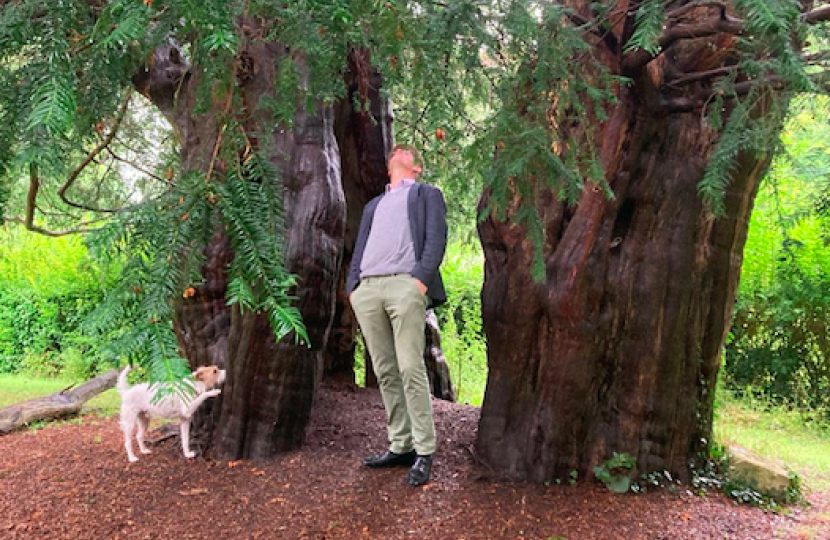
A week of politics and history. The Government pushed through the legislation for ‘Great British Energy’, its new mega-quango which will produce no energy. Meanwhile my Party emitted a lot of hot air in the reduction of the leadership candidates from six to five: farewell, Priti Patel: a shame, as she stood on a strong platform of empowering the party membership, which we certainly must do. The candidate I’m backing, Robert Jenrick, came top, which pleased me - but we have nearly two months to go, and any one of the five could yet finish first.
I met with fellow Wiltshire MPs and the Council leadership on Friday to discuss the Government’s proposed changes to planning policy. There is a clear need for large-scale housebuilding in England, and some new housing is needed in Wiltshire. But the main demand is in the cities, where the need for workers is and where most people looking for a home want to live. So it’s deeply concerning that the Government plans to tear up the rules the Conservatives brought in recently - under pressure from me and other rural MPs - to protect rural areas from unwanted and unsustainable development.
I spent Friday afternoon in Honeystreet, Alton Barnes and Alton Priors, the villages clustered between Milk Hill (Wiltshire’s highest spot) and the Kennet and Avon canal. As I showed in this short video the water off the hill presents a major risk of flooding, which has indeed - as I heard at the Alton Barnes coffee morning on Saturday - afflicted a number of unfortunate households in recent years. Wiltshire Councillor Paul Oatway and I discussed with residents the need for a proper topographical survey of the locality, and a proper map and survey of all the drains that run through it; then it might be possible to devolve meaningful resources and responsibility to the parish (which is not lacking in the brain or brawn required) to take on the job of mitigating flood risk locally.
Honeystreet is so called, Anne Wyles told me, because the mud from the rainwater off the hill makes the road sticky to walk on. Anne is mother to 11 children and the matriarch of the cafe and retail complex on the canal, run as a combined enterprise by her seventh child John. They led me through the Indian shop - stocking delights from the subcontinent and the Himalayas - to the farm shop, offering more consumable local produce, and thence into the Crop Circle Museum, showcasing the creations of aliens. Wiltshire, the world, and the other world, all represented in a series of renovated barns. This is a boho business empire, shabbily charming but thriving, not least due to key employee ‘Social Media Steph’ and to Starlink, the internet-by-satellite company (‘thank you Elon’, said John Wyles).
These barns once served the sawmill enabled by the canal but now long closed. The sawmill became Barlows Woodyard and Honeystreet Logs, which still do good business on the other side of the water. The Jains in India who make the furniture sold by the Wyles will not use new wood because they risk killing the little animals who infest it; they would not approve of the chopping and sawing that goes on here.
This is an old parish. David Carson showed me around the two churches, a few hundred yards apart, in the two Altons. New College, Oxford, the landlord hereabouts, was gifted all this land in 1385 as part of its endowment by William of Wyckham. But the churches are older, pre-Norman. Under the floor at Alton Priors during a recent restoration they found a sarsen stone, worked and shaped by some prehistoric mason presumably for worship, and built into the church to help the locals transition their faith with least trauma. Nearby is the northern source of the Avon; past here the big sarsens were dragged on their journey to Stonehenge (see last week’s newsletter). And in the churchyard is another likely sacral object: a yew tree 1700 years old; older by far than the church, older than Christianity in these islands, a living relic of the mysteries of the Pewsey Vale. Next week the Carnival comes round, invoking spectral memories.




